As we toss gear into the truck and finish morning coffees, Santos, our guide from Patagonia River Guides, informs me that our planned day on the Malleo will be spent on the lower section of the river and I immediately start to pepper him with questions. Why the lower section? Why not the upper? Or the middle? On my previous visits, I'd spent most of my time on sections of the Malleo other than the lower, and spent it enjoying fantastic fishing amongst some of the most beautiful vistas I'd seen in all of Patagonia. The little time I had spent on the lower section, which amounted to little more than an hour, hadn't been all that great. But Santos reassures me, repeatedly, that the lower is where we want to be on this given day, and so eventually, and reluctantly, I pipe down.
As it turns out, the portion of the lower section I'd fished in years prior barely scratched the surface of what that part of river had to offer. Once we arrived, and before we even wet a line, the Malleo, a river that had produced no small number of surprises in previous visits, had already found a way to do so again. The landscape of the lower river, with its towering rock formations and swift elevation changes, painted a different picture than any Malleo I had known previously. And the fishing turned out to be excellent once again, as we spent our day tossing small attractor patterns to eager fish that dotted riffles, drifting nymphs and hopper patterns through deep runs and delicately presenting small mayflies to big browns and rainbows that had taken up residence in some of the lower river's best prime lies.
The Malleo, by Patagonian standards, isn't a big river. From its origin at Lago Tromen, which sits near Argentina's border with Chile and just above the famous Lanin Volcano, to its terminus where it dumps into the Aluminé, the Malleo runs a relatively short course of around 30 miles. But the Malleo's somewhat abbreviated run has done little to diminish its fame — at least when compared other nearby Argentine rivers like the Aluminé, Collón Curá and Limay which are held in similar regard but which dwarf the Malleo in both size and length. In fact, the Malleo is widely held to offer some of the finest, if not the finest, dry fly fishing in all of Patagonia. And, in addition to offering some of the best fishing in Patagonia, despite its more compact nature, the Malleo's fishing is also some of the most diverse.
The Upper Malleo
After spilling out of Lago Tromen, the Malleo runs through Lanin National Park. Here, the river is very narrow, often under 20 feet wide in some reaches. As it courses, the Malleo tumbles over boulders and winds its through tight ravines. The river is clad by dense forest, much of which is predominated by willows and the native but otherwise sparsely seen Arucaria tree — an evergreen with broad, spiny, cactus-like needles. Trout hide in pockets, along steep banks and cling to the bottom of rocky runs. The upper Malleo's trout eat dry flies with zeal, but require careful, stealthy approaches and precise presentations due to the intimate conditions.

Most consider the upper region to be best fished in the spring, when water conditions are higher, but good fishing can be found throughout much of the summer by anglers willing to prospect and pick their way through the upper river's myriad holding water. Navigating the upper Malleo can be tough due to the conditions, where bank climbing and boulder scrambling are often requires, so if your knees aren't what they used to be, take heed.

The Middle Malleo
After exiting the park, the Malleo reaches the 25,000 acre estancia San Huberto and the river changes personality dramatically. The tight, rocky runs and steep, densely vegetated banks of the upper section transform into expansive, rolling meadows. Long, meandering runs, often lined by rich, soil-draped cutbanks, are punctuated by deep, slow pools.

For much of it's twenty mile course through the ranch lands of San Huberto, the Malleo looks and behaves more like a spring creek than a freestoner. Trout populations are perhaps highest through the middle section as they are anywhere on the river. And through most stretches, fat brown and rainbow trout rise greedily to hopper and mayfly patterns.
The Lower Malleo
The lower reaches of the Malleo flow through the Mapuche Indian reservation and the setting of the river again quickly transforms. The the deep, rich cutbanks and plodding flows of the middle section gradually give way to the arid, dusty banks and canyon-lined walls of the lower section. Here, the waters of the Malleo are re-energized as the river flows more tightly through the canyon lands of the reservation and begins to lose elevation more quickly in its approach to the Aluminé.

Trout space themselves in wide, brisk riffles, stage up throughout deep, rocky runs and patrol slow, small pools under willows, which cattle often lurk along the riverbanks to munch on. In some ways the lower river is a microcosm of the Malleo as a whole, offering incredibly diverse fishing during the course of a single day.

The Malleo is a river with distinct personalities that offers up some of the best and most diverse fishing in all of Argentina, and it is for these reasons that so many anglers make the Malleo a staple of regular returns to Patagonia. One day visits turn into two day visits which turn into three day visits or more. Depending on the time of year, one could easily spend a week exploring the many faces of the Malleo, and still leave much more to be uncovered.
If You Go
Choosing an outfitter
Argentina's northern Patagonia region is home to many guest ranches, or estancias, and anglers have lots of choices when it comes to choosing an outfitting and guiding service that can place them in various sprawling properties sliced by rivers like the Malleo. But Patagonia River Guides is one of the best at putting together an adventure like no other, starting on the Malleo with a stay at historic San Huberto. After a few days there, you can visit other fabled Patagonian rivers, like Limay, the Collon Cura or Aluminé, and experience other estancias along the way.
When to Go
Generally, late November through early April is prime time for the Malleo and other rivers in Argentina's northern Patagonian region.
How to Get There
Non-stop service from several U.S. hubs is available to Buenos Aires. Once there, you can overnight in the city and enjoy an evening out, or, if you prefer, line up a shuttle from the international airport to the country's domestic airport, where you can fly to San Martin de los Andes. Once there, you're in Patagonia, and some of the best trout fishing in the world awaits.





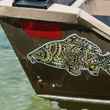
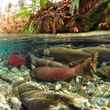

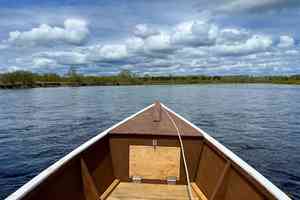


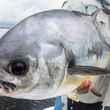
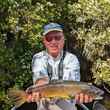
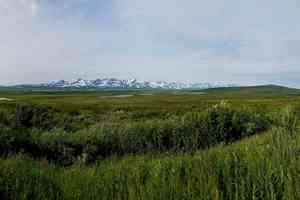

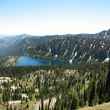
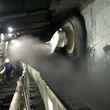
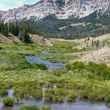



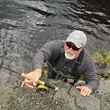
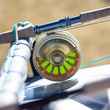



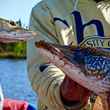
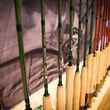

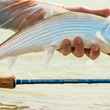

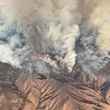
Comments